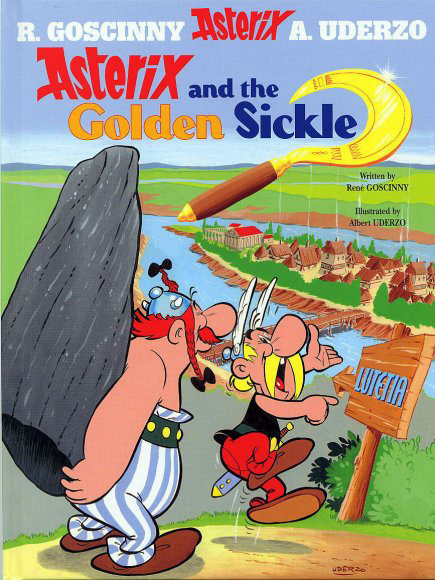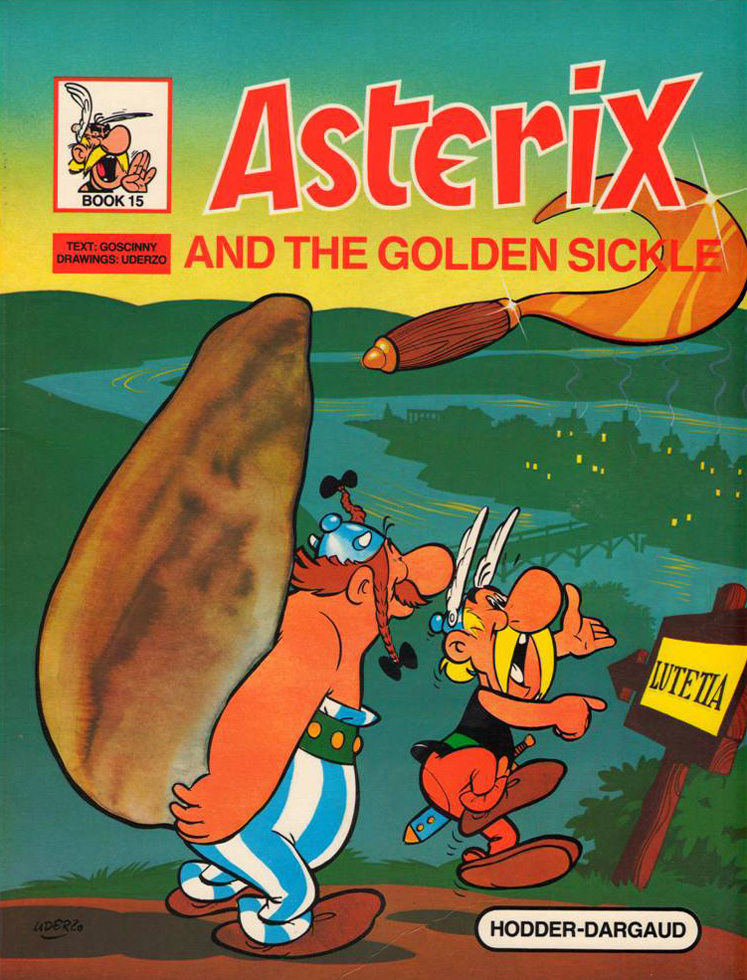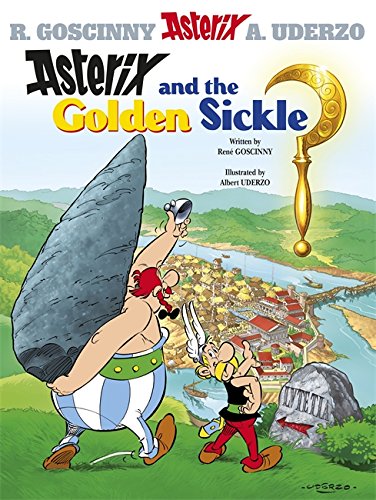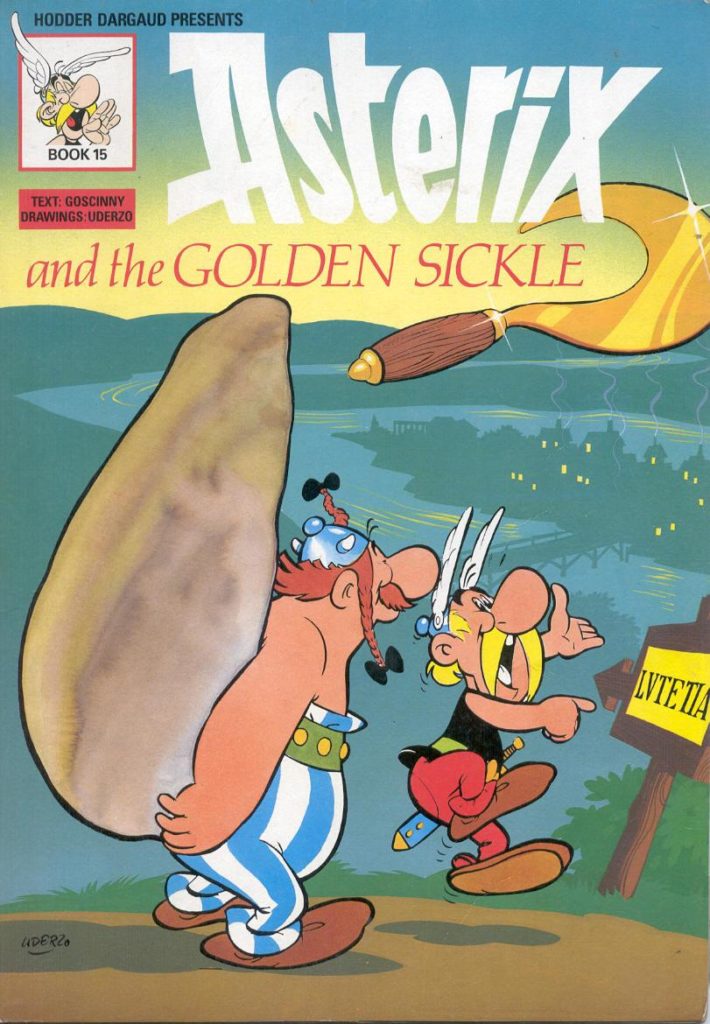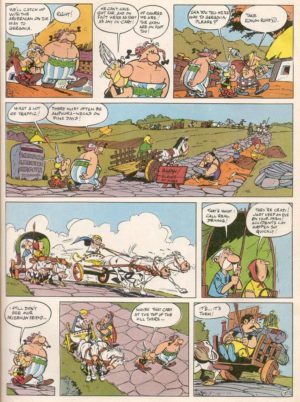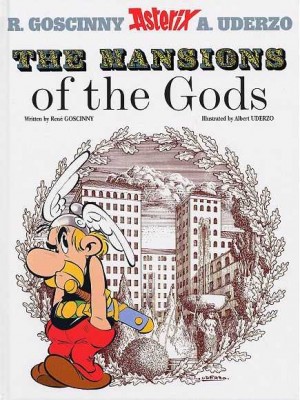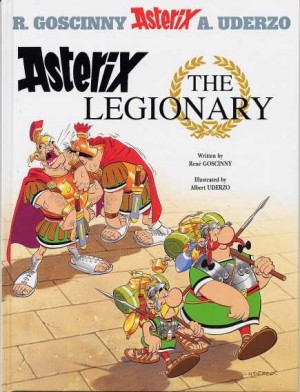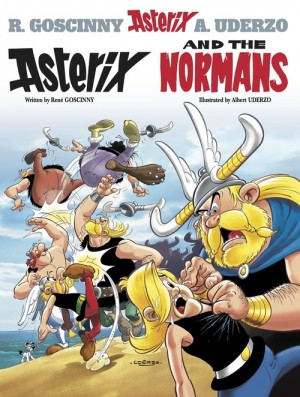Review by Roy Boyd
Asterix and the Golden Sickle is the second Asterix book by artist Albert Uderzo and writer René Goscinny.
Getafix the druid has broken his golden sickle, vital for the manufacture of magic potion, so Asterix and Obelix volunteer to visit Obelix’s cousin Metallurgix, a renowned sicklesmith in Lutetia (Paris). When they arrive in the big city (really a modest-sized village) it’s to discover that Metallurgix has vanished, and that they’ll have to pay an exorbitant amount for a sickle. Mayhem ensues, and our two Gauls find themselves battling elements of the city’s shady underworld, as well as being frequently arrested and imprisoned by the local Romans. Fortunately the Roman Prefect, Surplus Dairiprodus, (based on actor Charles Laughton) is amused by the commotion Asterix and Obelix cause, and keeps releasing them.
Needless to say, after a great many punch-ups and a great deal of running around, Asterix and Obelix return home triumphant. The book ends with a close-up on the bard, Cacofonix, bound and gagged to prevent his excruciating performance, while the villagers enjoy their already traditional banquet in the background. This was the first time Cacofonix suffered this ignoble fate, but far from the last, in a series that always offered cosy consistency to balance all the violence and excitement.
Although nearer to their final look than they were in Asterix the Gaul, Asterix and Obelix are still closer in height than would later be the case, as Obelix just seems to keep growing. The artwork is already slick and dynamic, with loads packed into each panel. A section in the forest, when they visit the sickle-trafficker’s underground lair is particularly well drawn, although Uderzo is just as good at depicting Roman buildings as prehistoric dolmen. However, the last eleven pages are drawn to different dimensions. Apparently Uderzo mistakenly drew these pages to comic strip sizes, and this robs us of some of the larger panels that always work so well.
We’ve not yet seen Dogmatix (who wouldn’t appear until the fifth book), or the pirates, and Asterix and Obelix, who takes on a much larger role than in the first adventure, have yet to travel outside Gaul, but a great deal of the formula that would prove to be so successful was already in place. This book would also provide a template for many later adventures, with Asterix heading off on a quest to some exotic location. Although later books would provide more biting satires of their subjects, this early adventure already had a point to make, comparing the peaceful idyll of village life with the hustle and bustle of the big city. The book’s morals are a questionable – take drugs, beat people up – but this series succeeded partly due to feel-good stories, with the plucky Gaul always coming out on top.
Asterix and the Golden Sickle doesn’t match many later adventures, but this is a polished and timeless piece of work with appeal for readers of all ages. Unusually for an Asterix book, the next adventure, Asterix and the Goths, would pick up right where this left off, with Getafix heading off to his druids’ conference, proud owner of a brand new golden sickle.
